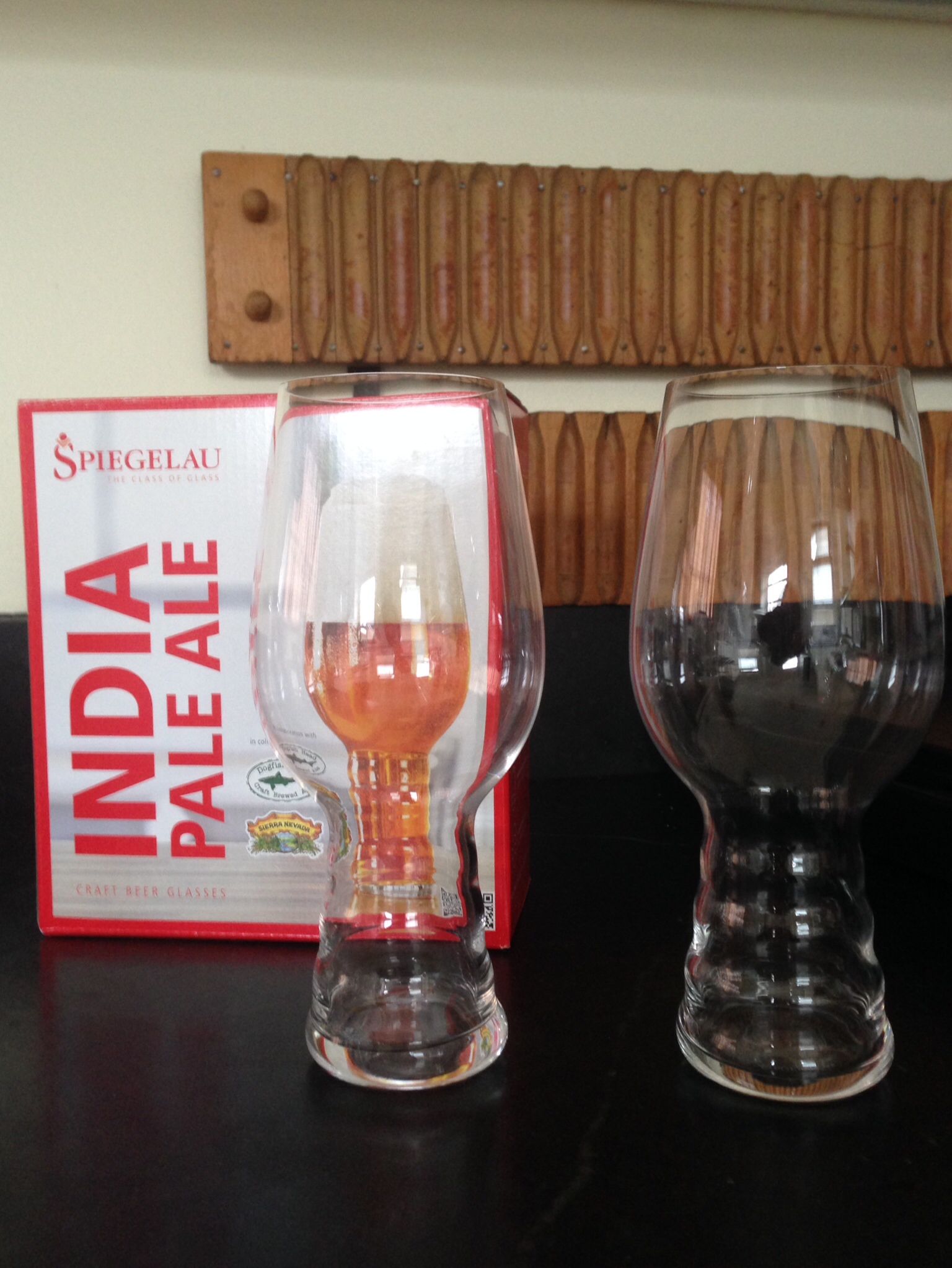Speigelau IPA Beer Glasses
/In the past few years, craft beer drinkers have been invited to engage in all matter of beer-related products, from craft beer magazines, industry newspapers, and custom kegerators, to specialty books, social networks like Untapped, and tasting guides and charts, all of which are supposed to enhance our beer knowledge and drinking experience. In fact, one can argue that in certain circles beer knowledge or, dare I say, connoisseurship, or perhaps beer geekery is at an all-time high. Just visit any good beer bar, brewery tasting room or decent bottle shop and you'll see beer drinkers taking notes, and and hear them gushing over their favorite beers, offering advice to complete strangers and sharing their love of suds with anyone who'll listen. Yet, when I look at the thousands of photos that are posted online of people enjoying really fantastic and interesting beers, most of them are still drinking from straight-sided shaker pints or frosty cold mugs.
That inattention to glassware is a shame, because those of us who drink good beer know that glassware matters. That's why in Germany and Belgium many breweries create their own glassware specifically designed for their beers (yes, the glasses are also effective marketing tools). Gone are the days of tankards, steins and mugs (although mugs still have their place). The benefits of flutes (either a beer flute, or champagne flute), goblets, tulip glasses, nonic pints (think Guinness or English bitters), pilsner glasses, snifters, wiezen glasses and even red wine glasses (Riedel Stemless Cabernet glasses are my favorite) are all well known amongst craft beer drinkers. The use of these glasses in conjunction with the right beer style enhances the drinking experience by highlighting the distinct characteristics of each style. For a really succinct breakdown of glassware and beer styles visit Beer Advocate's Glassware Guide.
Earlier this year, however, a new glass was added to the craft beer drinker's glassware stable, the Spiegelau IPA glass. These glasses, designed with the help of Ken Grossman founder of Sierra Nevada, and Sam Calagione President of Dog Fish Head are intended to enhance the flavor, aroma, and drinking pleasure of every American hop heads favorite beer, the American IPA. In a video that Spiegelau produced, both Grossman and Calagione extoll the virtues in effervescent praise of their new glass.
Being a sucker for a good marketing video and convinced that their enthusiasm was genuine (but always remaining cynical and skeptical), I decided to take the plunge. According to the site, the 19 oz. glasses are "designed to showcase the complex and alluring aromatic profiles of American 'hop-forward' IPA beers, preserve a frothy head, enhance taste and mouthfeel, and present a comfortably wide opening for the drinker to savor each beer." The bottom of the glass feels and looks like a handle, supposedly offering points of "nucleation" and "friction" where the beer passes over the ridges and "breaking out more aromatics" to give the drinker more aromas and thus better flavor.
Taking one for the team, the JustAnotherBeerBlog.com crew (me and friend) sat down to test these claims. Pouring Manzanita Brewing's "IPA," into a Spiegelau glass, a Riedel Stemless wine glass, a shaker pint glass, and a tulip glass, we started our "highly scientific" tests. First, was the "nose" test, trying to determine which of the glasses served up the best aroma. In the pint glass, the hop and grain aromas were present but not as concentrated as in the wine and tulip glasses; the bowl allows the drinker to get his/her nose into the glass, concentrating the aromas in a way that makes them fully present and quite pleasant. The IPA glass compared favorably to the tulip and wine glasses, offering a noticeably more intense aroma than the traditional pint glass.
Next, the all-important taste test. The wine and tulip glasses offered up a familiar flavor profile, both the malt and hops shined through. Perhaps the added flavor perception is owed to the shape of the glasses, which provide a bit more aroma and thus the illusion of more flavor. In comparison the IPA served in the pint glass came across a touch less interesting but I may be nitpicking here trying to find difference. Again, the IPA glass was equal to the other wide-bowled glasses, offering up the impression of more and interesting flavors. The "handle," while I'm not convinced it "opened" the beer or provided any better flavor than that of the other glasses, did provide a pleasant tactile feel for those of us that fidget with glasses as we drink.
Overall, the IPA glasses are interesting and their unique shape will definitely be a conversation starter, but to be totally honest, I'm not sure they offer the benefit that Spiegelau, Grossman and Calagione claim. Am I happy with my purchase? Absolutely. Would I be just as happy drinking from the Reidel or tulip glass? Yep. Are the IPA glasses worth the money (at around $20 for two? Sure, if you're looking for an interesting and playful glass, these fit the bill; they had the benefits of wide-bowled, thin-rimmed glasses in a unique shape that I found particularly pleasing.
IPA Glass





